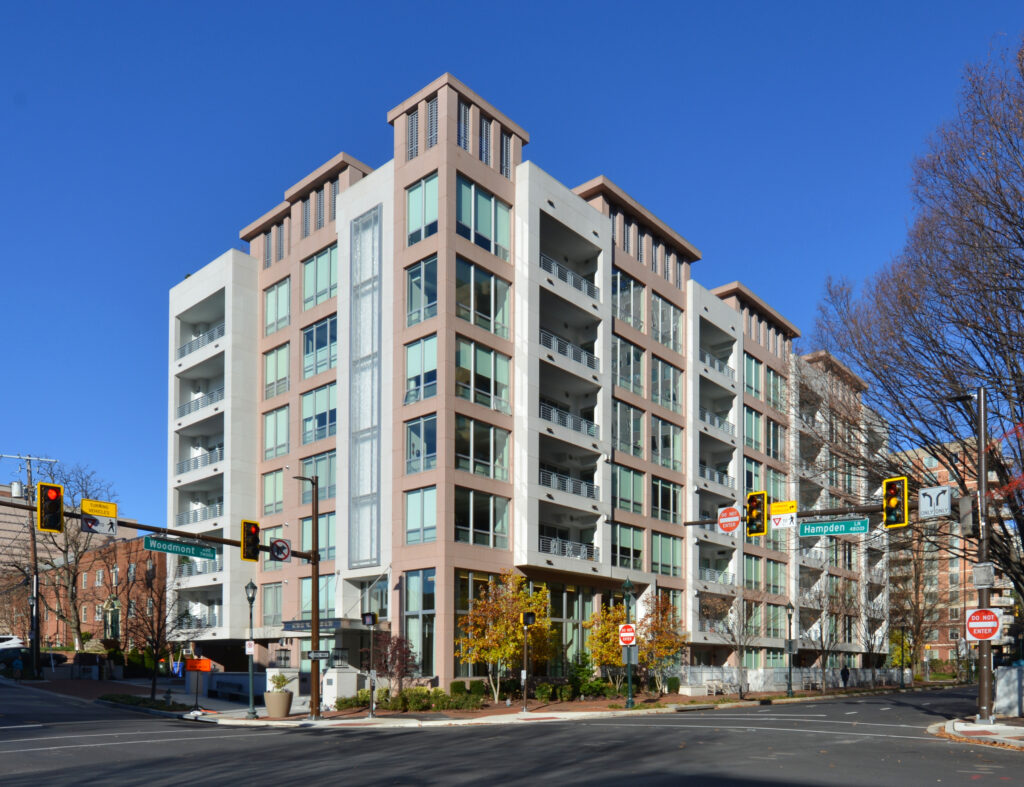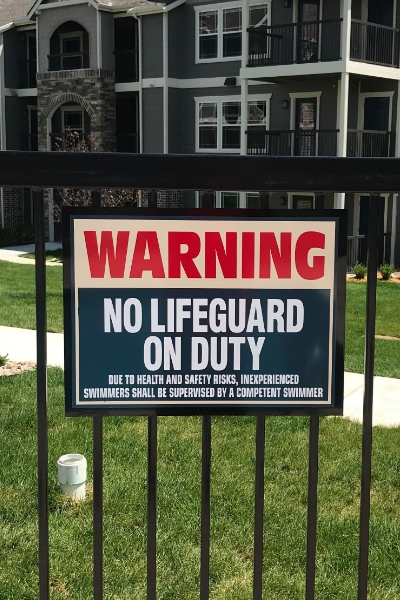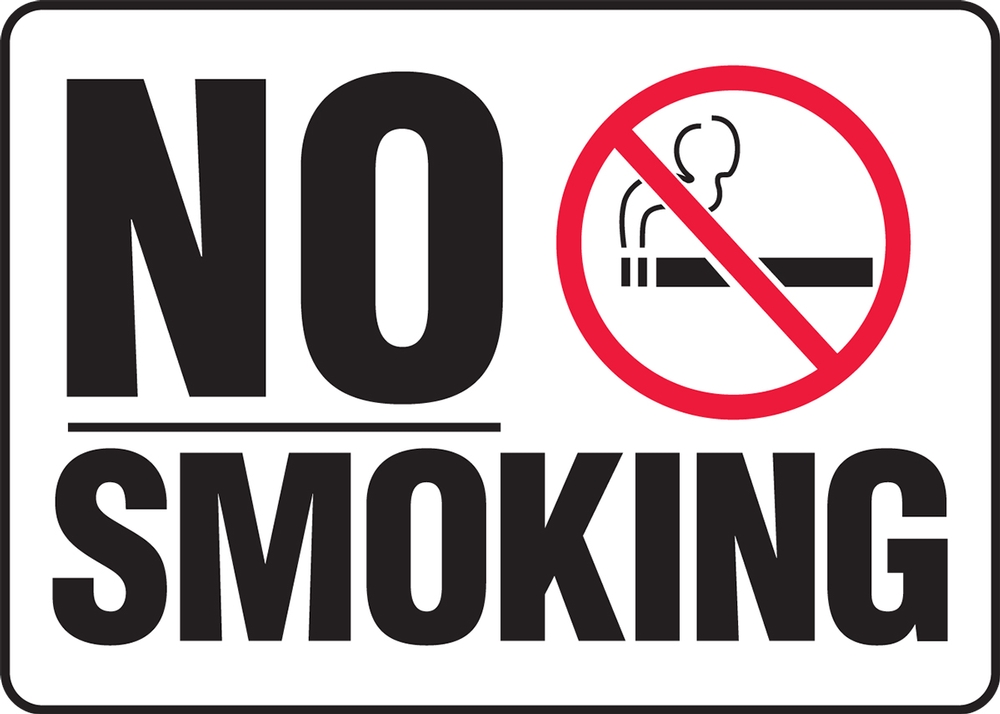California multi-family rental home owners and property managers need to be educated about appropriate ‘Signage’ for their properties. The following is a concise list of typical signage at multi-family buildings, rental properties, and neighborhoods.

Responsible Person (At Property) Signage Required
For 4-15 unit residential properties, if the home owner does not live on-site, a sign must be posted showing the name and address of the property “responsible person”. California Code of Regulations Title 25, Section 42 reads in pertinent part, a supervisor, a manager, a janitor, a housekeeper, or other responsible individual shall live upon the premises and shall have charge of every apartment building in which there are 16 or more apartment houses, and of every hotel in which there are 12 or even more visitor rooms, in the event that the owner of any such apartment house does not live on the premises.
Simply one caretaker or manager would be required for all structures under one possession and on one adjoining tract. If the property owner does not reside upon the premises where there are greater than four units but less than 16 units, a notice specifying the manager’s name and address, or the name and address of his agent accountable of the apartment building(s), should be posted in a visible and conspicuous location on the premises.
Are Parking Regulations, Parking Restriction Signs Required?
Parking is usually a critical component to a multi-family residential building, especially in crowded neighborhoods, or downtown areas. California Motor vehicle Code § 22658 authorizes removal of unauthorized or abandoned cars from private parcels if certain conditions exists and specific procedures are followed.
One scenario permitting vehicle extraction states that posted signage be installed, in a conspicuous and visible location, at each entry to the residential property. The sign must be 17” by 22” and its lettering much be in 1” tall letters. It must state that public parking is prohibited and/or restricted and that cars will be towed/hauled at the car owner’s expense. The sign must state that a citation may be issued. It must also show the telephone number of the local police department and any towing company that will be towing the vehicles.
To learn more about towing cars from personal/private property parking lots, look to California Vehicle Code § 22658 which can be found at http://www.dmv.ca.gov/pubs/vctop/d11/vc22658_2.htm.
Health Facility Signs and Diving/Swimming Pool Signs
If the multi-family residential property has a pool or spa, the California state regulation calls for the following:
Where No Lifeguard Service is Supplied:
– At least one (1) required sign posted that reads:
“WARNING — NO LIFEGUARD ON DUTY”, in clearly clear letters a minimum of 4 inches higher. (Title 22, Cal. Administrative Code, § 65539(c)).
– At least one (1) required sign posted that reads:
“Children Under the Age of 14 Should Not Use Pool Without and Adult in Attendance” (Title 22, Cal. Administrative Code, § 65539(c)).
– A property manager must post diagrammatic illustrations of artificial respiration where plainly apparent from the nearby pool deck. (Title 22, Cal. Administrative Code, § 65539(d)).
– A property manager must post the phone number of the nearby ambulance service, fire, police, and sheriff’s department, in addition to instructions that, if needed, artificial respiration should be started immediately and continued until a physician shows up or mechanical resuscitators are applied. (Title 22, Cal. Administrative Code, § 65539(d)).
– A property manager must post a sign near the swimming pool entrance displaying the maximum number of permitted occupants. The capacity for every swimming pool is one bather for every single twenty square feet of water surface area. The signage needs to have plainly clear letters at the very least four inches high. (Title 22, Cal. Administrative Code, §§ 3119B.1. 3118. B. 1.2).
– A property manager must post a sign by the spa indicating the maximum spa occupants. The capacity for every swimming pool is one bather for every single ten square feet of water surface area. (Title 22, Cal. Administrative Code, § 3119B.1.1).
– Where diving is prohibited, a property manager must post signage with clear letters of a minimum of four inches high that states “NO DIVING ALLOWED.” (Title 22, Cal. Administrative Code, § 3119B.2).
– If gas chlorine is used for swimming pool disinfection, a property manager must post signage conspicuously on the exterior side of the entry door to the chlorine area or on the nearby wall surface location. The sign must present the proper hazard recognition for gas chlorine, and letters a minimum of 4 inches higher stating “DANGER: GASEOUS OXIDIZER– CHLORINE.” (Title 22, Cal. Administrative Code, § 3119B.3)
– If the swimming pool does not have light fixtures complying with Part 2-9019 of the code, a property manager must post signage with clearly legible letters a minimum of 4 inches high should be posted in an area near each entryway to the swimming pool location that states: “NO USE OF SWIMMING POOL ALLOWED AFTER DARK.” (Title 22, Cal. Administrative Code, § 3119B.4).

– For spa pools, post a preventative/precautionary sign with clearly legible letters a minimum of 4 inches high near the entrance to a swimming pool area, having the following language:
“CAUTION.
1. Elderly persons, pregnant women, infants, and those with health conditions requiring medical care should consult with a medical doctor prior to entering the spa.
2. Unsupervised use by kids under the age of 14 is not allowed.
3. Hot water immersion while under the influence of alcohol, narcotics, drugs, medicines, or narcotics could cause major and serious consequences and is not advised.
4. Do not use spa alone.
5. Long direct exposure may cause nausea, lightheadedness, or fainting.” (Title 22, Cal. Administrative Code, § 3119B.5.).
Approved signs should be preserved in a legible manner. (Title 22, Cal. Administrative Code, § 3119B.6).
More signage could be required under neighborhood regulations or other appropriate state laws.

David currently is the broker/owner of several real estate related businesses which manage and maintain 300+ client properties on the San Francisco Peninsula.
Trust, transparency, and performance guarantees are the foundation of these businesses. David challenges anyone to find a PM professional that offers services similar - extensive education, customer service, and performance guarantees.
David also provides consulting for his clients on property development feasibility, construction, and complex real estate transactions.
David has authored a published law review article, three real estate books, and over 150+ real estate blog articles.
- “Wildfires, Insurance & Mortgages: Will Your Home Survive the Financial Aftermath?” - March 3, 2025
- What’s Driving California’s Commercial Real Estate Shakeup? - February 27, 2025
- Critical Issues in Triple Net Leases Investors Should Know - February 14, 2025

